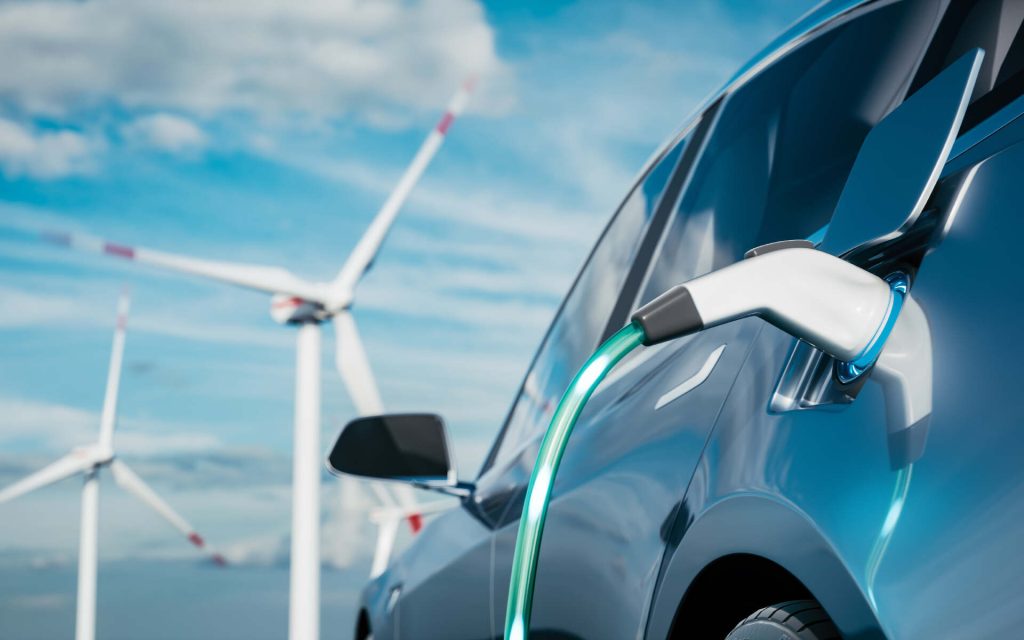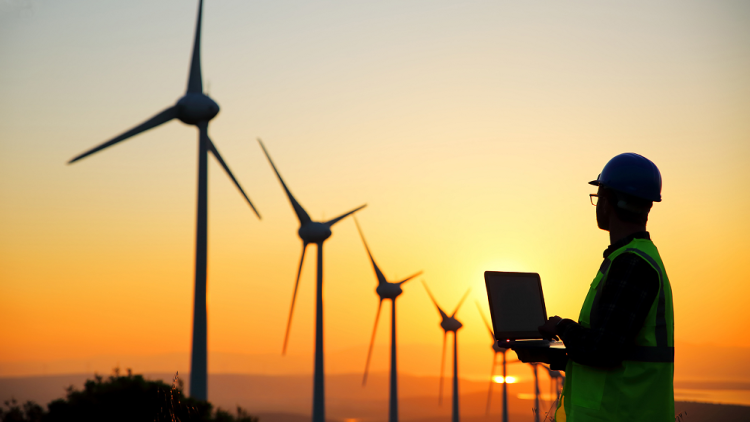Introduction
Over the past decade, the renewable energy sector has experienced unprecedented growth. As concerns over climate change, air pollution, and energy security continue to rise, the transition from fossil fuels to renewable energy sources has gained significant momentum. Governments, businesses, and consumers alike have increasingly turned to renewable energy sources such as solar, wind, hydro, and battery storage as sustainable alternatives to traditional energy.
However, the question remains: can the rapid growth of the renewable energy sector continue, or are there challenges on the horizon that could slow this expansion? The next decade will be critical for the industry, as it faces a range of opportunities and challenges. This article will explore the key factors driving the growth of the renewable energy sector, the obstacles it must overcome, and the expected key changes that could shape the future of the industry over the next ten years.
I. Key Drivers Behind the Growth of Renewable Energy
- Global Push for Decarbonization One of the primary drivers of the renewable energy sector’s rapid growth is the global effort to decarbonize energy production and mitigate climate change. The 2015 Paris Agreement set ambitious targets to limit global warming to below 2°C above pre-industrial levels, with efforts to limit the increase to 1.5°C. This commitment has spurred governments worldwide to invest heavily in renewable energy infrastructure to reduce greenhouse gas emissions.
- National Commitments: Many countries have committed to net-zero emissions by 2050, with some aiming to achieve this goal even sooner. For example, the European Union has set a target to reach net-zero emissions by 2050, while China aims to reach carbon neutrality by 2060. These commitments have led to massive investments in renewable energy technologies.
- Carbon Pricing: Governments are increasingly adopting carbon pricing mechanisms, such as carbon taxes and cap-and-trade systems, to make fossil fuel energy more expensive and renewables more attractive. These policies create financial incentives for businesses and consumers to transition to cleaner energy sources.
- Technological Advancements in Renewable Energy Technological advancements have played a critical role in the growth of renewable energy. Over the past few years, the costs of solar, wind, and battery storage technologies have decreased dramatically, making them more competitive with traditional energy sources.
- Solar Power: The cost of solar panels has fallen by more than 80% over the past decade, largely due to advancements in photovoltaic (PV) technology and economies of scale. Innovations such as bifacial solar panels, which capture sunlight from both sides, and the development of solar-powered rooftops and solar skins, have further enhanced the efficiency and attractiveness of solar energy.
- Wind Energy: The cost of wind turbines has also decreased significantly, while their efficiency has increased. Innovations in turbine design, such as larger and more powerful offshore turbines, have opened up new opportunities for wind energy generation, particularly in areas with high wind potential.
- Energy Storage: As renewable energy sources like wind and solar are intermittent, advancements in energy storage, particularly lithium-ion batteries, have been essential for making renewable energy more reliable. The development of more affordable and efficient storage technologies is expected to enable better integration of renewable energy into the grid.
- Investment in Clean Energy Investment in renewable energy has surged in recent years, driven by both private sector funding and government incentives. International organizations, private equity firms, and venture capitalists have increasingly recognized renewable energy as a viable long-term investment opportunity.
- Green Bonds: Green bonds, which are used to finance environmentally-friendly projects, have seen significant growth. In 2020 alone, global green bond issuance exceeded $300 billion. These financial instruments provide capital for renewable energy projects such as wind farms, solar installations, and battery storage.
- Corporate Sustainability Goals: Large corporations, including tech giants like Google, Apple, and Microsoft, have committed to sourcing 100% of their energy from renewable sources. This has led to increased demand for renewable energy as companies seek to meet their sustainability targets.
II. Key Challenges Facing the Renewable Energy Sector
- Intermittency and Grid Integration One of the biggest challenges for renewable energy sources, particularly solar and wind, is their intermittency. Solar power is only available when the sun is shining, and wind power is only available when the wind is blowing. This variability can make it difficult to ensure a stable and reliable energy supply, especially as the share of renewables in the energy mix increases.
- Energy Storage: While advancements in battery storage technologies are helping to address this issue, current energy storage systems are still costly and have limited capacity. Continued innovation in storage technology is essential for enabling renewable energy to become a dominant source of power.
- Grid Modernization: Many countries’ electrical grids are not designed to handle the decentralized and variable nature of renewable energy. Upgrading grid infrastructure to accommodate higher levels of renewable energy, such as the development of smart grids and more flexible transmission networks, will be crucial for the future of the industry.
- Policy Uncertainty Government policies have been instrumental in driving the growth of renewable energy, but policy uncertainty remains a significant risk for the sector. Changes in leadership, shifts in political priorities, or the rollback of subsidies could undermine investment in renewable energy projects.
- Government Incentives: In many countries, subsidies and tax credits play a key role in making renewable energy projects financially viable. For instance, in the U.S., the federal Investment Tax Credit (ITC) and the Production Tax Credit (PTC) have been instrumental in boosting solar and wind energy development. Any reduction or elimination of these incentives could slow growth.
- Geopolitical Risks: Trade policies and tariffs on renewable energy components can also create uncertainty. For example, trade disputes between the U.S. and China have led to tariffs on solar panels and other renewable energy components, which can increase costs and delay project development.
- Resource and Land Availability While renewable energy sources such as solar and wind are abundant, the land and resources required for large-scale installations can be a limiting factor. In densely populated areas or regions with limited available land, finding space for renewable energy projects can be a challenge.
- Land Use Conflicts: Large-scale renewable energy projects, particularly wind farms and solar installations, can face opposition from local communities due to concerns about land use, environmental impact, and aesthetic considerations. Balancing the need for renewable energy infrastructure with local land use needs will be a critical challenge in the coming years.
- Resource Constraints: The production of renewable energy technologies, particularly solar panels and wind turbines, requires materials such as rare earth metals and lithium. Supply chain disruptions or resource shortages could hinder the growth of the renewable energy sector.

III. Expected Key Changes in the Renewable Energy Sector Over the Next Decade
- Expansion of Offshore Wind Energy Offshore wind energy is expected to be one of the fastest-growing sectors in renewable energy over the next decade. Offshore wind farms are capable of generating higher and more consistent levels of energy compared to onshore wind farms, and they can be located in areas with limited land availability.
- Technology Advancements: Advances in turbine technology, such as larger and more efficient offshore turbines, will make offshore wind energy more cost-competitive with other energy sources.
- Geographic Expansion: Countries with large coastlines, such as the U.K., the U.S., China, and Japan, are expected to invest heavily in offshore wind farms. The global offshore wind capacity is projected to increase significantly in the coming years.
- Energy Storage Breakthroughs As the renewable energy sector expands, energy storage will become even more critical for balancing supply and demand. Over the next decade, significant breakthroughs in battery technology, such as solid-state batteries and flow batteries, could revolutionize the storage capacity of renewable energy.
- Long-Duration Storage: While current battery systems are effective for short-term storage, the development of long-duration energy storage solutions will enable renewables to power the grid during periods of low production, such as at night or during periods of low wind.
- Cost Reductions: As storage technologies improve and economies of scale take effect, the cost of energy storage is expected to decrease, making it more affordable to store renewable energy on a large scale.
- Decentralization of Energy Production The future of renewable energy is likely to be characterized by a shift toward decentralized, community-based energy systems. Solar panels, small wind turbines, and home energy storage systems will enable individuals and businesses to generate and store their own energy, reducing reliance on centralized grids.
- Microgrids and Distributed Generation: The development of microgrids and distributed generation systems will allow communities to become more energy-independent and resilient to disruptions in the main grid. This trend is expected to accelerate with advances in smart grid technology and the decreasing cost of renewable energy technologies.
- Digitalization of the Energy Sector: The integration of digital technologies, such as artificial intelligence and blockchain, into the energy sector will further decentralize energy production. Smart meters, real-time energy management systems, and peer-to-peer energy trading platforms will allow for more efficient and flexible energy distribution.
- Increased Role of Hydrogen Energy Hydrogen is increasingly being viewed as a key component of the global energy transition. Green hydrogen, produced from renewable energy sources, is expected to play an important role in decarbonizing sectors that are difficult to electrify, such as heavy industry and transportation.
- Hydrogen Infrastructure: As production costs for green hydrogen continue to fall, investments in hydrogen production, storage, and distribution infrastructure will increase. Countries like Germany, Japan, and Australia are already positioning themselves as leaders in the hydrogen economy.
- Integration with Renewables: Green hydrogen can be used as a long-term energy storage solution, allowing excess renewable energy to be converted into hydrogen and stored for later use.
IV. Conclusion: The Future of the Renewable Energy Sector
The renewable energy sector is poised for continued growth over the next decade, driven by global decarbonization efforts, technological advancements, and substantial investments in clean energy. However, challenges such as intermittency, policy uncertainty, and land availability must be addressed to ensure the continued expansion of the sector.
Key changes are expected in the coming years, including the rise of offshore wind energy, breakthroughs in energy storage, the decentralization of energy production, and the increased role of hydrogen. These developments will reshape the global energy landscape and play a crucial role in achieving a sustainable, low-carbon future.
As the renewable energy sector continues to evolve, it will remain a central part of the global effort to combat climate change, improve energy security, and drive economic growth. The next decade will be critical in determining whether the industry can overcome its challenges and become the dominant source of global energy.

















































